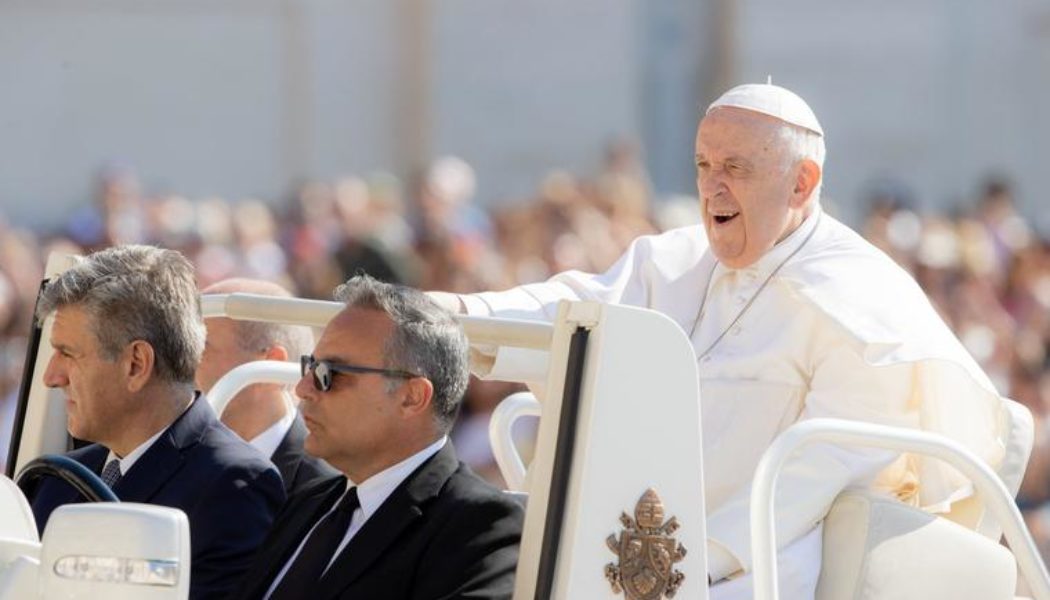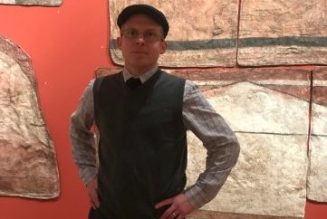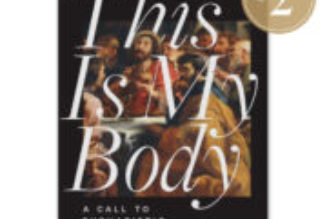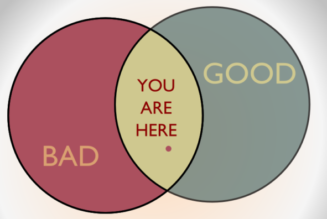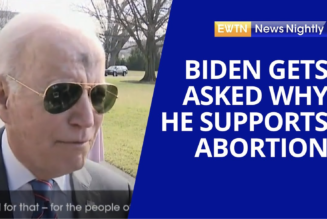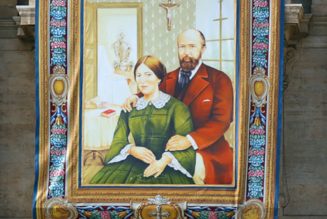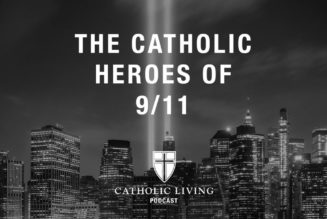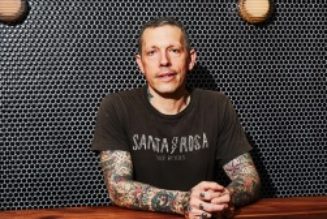
In a recently published interview with the heads of Jesuit cultural magazines, Pope Francis described the current problem of the Church as “precisely the non-acceptance of [the Second Vatican] Council.” In particular, the Holy Father singled out the problem of “restorationism,” a rejection of the Council at least “in some contexts,” which he described as especially pronounced in the United States.
To bring some added understanding to the Pope’s remarks, the Register talked to three theological thinkers active in the life of the Church in America.
John Cavadini is a theologian at the University of Notre Dame, where he also directs the McGrath Institute for Church Life.
Stephen White is the executive director of The Catholic Project at The Catholic University of America and is a Catholic studies fellow at the Ethics and Public Policy Center.
Larry Chapp is a retired professor of theology who now owns and manages the Dorothy Day Catholic Worker Farm in Pennsylvania and blogs at Gaudium et Spes 22.
What did you make of the Holy Father’s claims regarding “restorationism” — that there is a significant group of those who reject the Second Vatican Council in the United States and are actively trying to restore a previous version of the Church?
CAVADINI: I think the Holy Father holds this view because it is true. The most vocal spokesman for this view is Archbishop [Carlo] Viganò, who is also critical, seemingly to the point of contempt, of Pope Francis. Viganò rejects Vatican II, claiming it represents a diabolical inroad into the Church and the triumph of Freemasonry from within the ranks of the hierarchy. Viganò has groups of loosely connected followers in the U.S. with a range of buy-in that goes from taking his critique as possibly legitimate to accepting it fully.
Why are they a more prominent factor now? Many, whether rightly or wrongly, perceive Francis as favoring those who argue approvingly that the Council was a break with the Church’s past, [an approach that] has only been half-heartedly embraced by those, like JPII and Benedict, who believed the Conciliar reforms were in genuine continuity with the Church’s tradition and in fact in some cases a recovery of it. Ironically, the “restorationists” agree with those who believe the Council was a break with the past, only they view the break as bad, while the “liberals” they believe Francis is favoring believe the rupture was good and much of the past should be left behind.
WHITE: Whose interpretation of the Council are we talking about being accepted or rejected? In the United States, there is a small portion of Catholics who reject the documents of the Council, but their numbers and influence are comparatively tiny. There are far more American Catholics who embrace the “spirit” of the Council while showing complete disregard for actual texts of the Council, let alone the magisterial interpretation of the Council provided by the popes from Paul VI through to Pope Francis. Then there are many millions of Catholics — including the overwhelming majority of priests and virtually all the bishops — who embrace the Council as interpreted through both the documents of the Council and the more than 50 years of papal teaching built upon the Council.
It is baffling to me how anyone with even a passing familiarity with realities of American Catholic life in the years since the Council could imagine that the restoration of a pre-Conciliar Church is a mainstream idea. It simply isn’t. If the Holy Father has been told this is the case, he hasn’t been told the truth.
CHAPP: There can be little doubt that there has been an increase in the number of devout American Catholics who identify as “traditionalists” who publicly espouse “restorationist” views. And by restorationist I mean those who seek to roll back the reforms of the Council in both liturgy and doctrine. Specifically, the movement to restore the old Mass often involves cutting criticisms of the Mass of Paul VI to the point of referring to the new Mass as borderline heretical and as spiritually toxic. They go way beyond legitimate criticism of certain aspects of the new Mass and trend toward rejecting it tout court. There is also criticism in these circles of the Council’s teaching on ecumenism, interreligious dialogue, salvation outside of the visible Church and religious freedom. They view such “reforms” with a jaundiced eye and refer to the “ressourcement” theology that inspired the Council from such figures as Henri de Lubac and Joseph Ratzinger as “modernist.” Therefore, they do indeed reject the main impetus of the Council and seek to return the Church to her pre-1962 form in both liturgy, theology and doctrine. Many of them call for the Council to be simply “set aside” as a pastoral failure and for a future pope to repudiate many of its teachings.
Therefore, the Pope is not attacking a straw man here, since such forces do exist in the American Church. However, I think the Pope is getting advice from his advisers in the Vatican who exaggerate, often for ideological reasons, the influence of such forces and make it seem as if the entire American Church is just riddled with restorationists of this type. I think this is both empirically false and is the result of the fact that many of these restorationists have a large footprint in social media, giving the false impression that they are more influential than they are.
In addition to restorationism, are there other illegitimate responses that are “gagging” the Council? If so, how might these other illegitimate responses relate to this restorationist tendency described by the Pope?
CAVADINI: Absolutely. I think the poor and hurried implementation of the vernacular in the liturgy and the introduction of a kind of casual style of celebration, which wasn’t especially reverent though not outright irreverent, the unthinking removal of statues and iconic art from sanctuaries, the discouragement of most devotions (many of which had been lay-led), and the banalization of Church music are all examples of the frustration of the Council’s original intentions. The style and theology underpinning the International Commission on English in the Liturgy (ICEL) translations, stripping many of the prayers of elegance, deemphasizing God’s transcendence and (biblical!) themes of sacrifice and our radical dependence on God, to name a few, seemed to find their natural expression in the liturgical abuses just mentioned. However, much of the worst of this is past, and more of it will pass — the new ICEL translations in response to Liturgiam Authenticam are a great achievement often overlooked, just one example.
WHITE: In the United States, the greatest threat to the legitimacy and acceptance of the Council comes from those who reject the actual words of the Council and of the popes who have been interpreting and implementing it for more than half a century. The greatest “restorationist” push in American Catholicism is not from those who would attempt to return the pre-Conciliar Church, but from those who wish to erase the post-Conciliar magisterial teachings of Pope St. Paul VI, Pope St. John Paul II and Pope Benedict XVI.
CHAPP: I think the co-optation of the Council by the progressive wing of the Church derailed and distorted its reforms in a secularizing direction that merely baptized the zeitgeist. This then led many people to associate the Council itself with these distortions and therefore to then react against the Council in restorationist ways. They often invoke the Dominical statement that you shall know a tree by the fruit that it bears and move from there to a classic post hoc ergo propter hoc form of argumentation that blames the Conciliar texts themselves for the distortions that followed. I think this is intellectually lazy and ignores the significant ways the Council corrected elements within the pre-Conciliar Church that truly needed reforming. And their call for us to return to that earlier era would only return us to those problems, leaving them unaddressed and festering.
The Holy Father isn’t necessarily making this move in this interview, but it’s not hard to imagine someone using a term like “restorationist” to attack not only those who illegitimately reject the Second Vatican Council, but also those who embrace the Council yet nonetheless hold different views on how it should be interpreted and emphasize continuity with what came before. What’s the danger of this kind of conflation?
CAVADINI: We saw this conflation with the resistance to the revision of the original ICEL translations in response to Liturgiam Authenticam. Those in favor of a more literal, if not literalist, translation were regarded by some as almost worse than those desiring to scrap the vernacular altogether. We had gotten used to a flattening out of liturgical language and of the harder truths, perhaps, that Revelation presents us with. But the dialogue back and forth was probably in the end a good thing because it helped sort out, to some extent, the difference between good literal translation and literalism.
WHITE: I don’t think it makes much sense to interpret “restorationist” — at least as Francis uses it — as including Paul VI, John Paul II or Benedict XVI. But for the sake of argument, such a move would have at least two obvious consequences. First, it would reinforce, rather than discredit, traditionalist claims that the Council broke from the faith of the apostles. Beyond that, such an interpretation would strongly suggest that the true meaning of even an ecumenical council is merely a function of whomever happens to be pope at any given moment. It would effectively reduce the Church’s entire magisterium to so many policy preferences, entirely subject to constant and unlimited revision at the whim of the bishop of Rome.
CHAPP: I spoke above of the ideological motivations of those giving the Pope advice on the status of the American Church. And I think that this motivation is precisely the desire to discredit the hermeneutic of continuity with regard to the Council developed by St. John Paul II and Benedict XVI. As such, there is a conflating of illegitimate forms of restorationism, espoused by a vocal but small minority, with the great majority of devout and orthodox American Catholics who want to embrace the Council as a profound development of all of the Tradition and with a desire to reform the Church by returning to the sources of Revelation. What is in play here is the so-called hermeneutics of rupture espoused by the “Bologna school” of Conciliar reception and its view that the Council represented a kind of a new Pentecost in the Church and a decisive rupture with the Tradition in key areas.
The Holy Father expressed the idea that it takes 100 years for a Council to be fully received, stating, “We still have 40 years to make it take root, then!” In your estimation, what’s one aspect or dimension of the Council that has yet to take root?
CAVADINI: I think the theology of Revelation expressed in Dei Verbum has yet to be fully realized and enacted. It teaches that Holy Scripture has God as its author and also that the human authors were true authors. Our contemporary biblical criticism has embraced the second part (true human authorship) enthusiastically, but has not really struggled with holding it together with the first part (divine authorship). But this kind of essentially secular biblical criticism cannot be “the soul of sacred theology,” as Dei Verbum calls for, because it leaves the properly theological dimension of Revelation behind. Dei Verbum proffered a challenge, and 60 years later we have not yet risen to it, although there are many promising new approaches underway.
WHITE: The Council’s vision of the mission and vocation of all the baptized, particularly as articulated by Lumen Gentium, is still far from being fully realized. Too often and for too long, the responsibility of every Catholic for the mission of the Church has been either ignored — and when it hasn’t been ignored, it has been cast, not in terms of missionary service, but in the worldly categories of power and politics. At its best, I think Pope Francis’ notion of synodality actually aims to addresses this problem, but the temptation to make it all about politics and power remains as strong as ever.
And, of course, there is the immense gap which still exists between what the sort of liturgical reform called for by the Council and the hyper-banal approach to liturgy that has made so many American parishes a near occasion for apostasy. I’m a Novus Ordo guy through and through, but if our worship is routinely unserious and worldly, what else would we expect?
CHAPP: I think the universal call to holiness is one of the most neglected themes of the Council. The Council desired a less clerical Church and a reinvigorated laity. The Council was a missionary Council that sought to engage the world via a laity that is deeply educated in the pedagogy of the Church’s life and teaching and who could then act as a leaven within society. Sadly, what we got instead was a laity that was told that the Church had now embraced modernity and blessed it, giving the green light to a mainstreaming of the laity into the dominant cultural forms and thought patterns of secularized, bourgeois liberalism. What we need is a laity that is instead willing to challenge the structures of modernity from within the categories of the Church’s traditional faith. And if that is “restorationist,” then you can count me as one, too.
Join Our Telegram Group : Salvation & Prosperity
